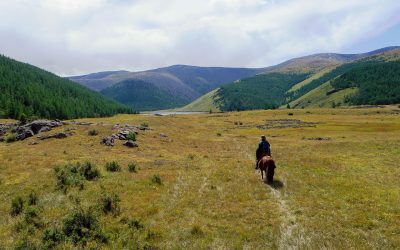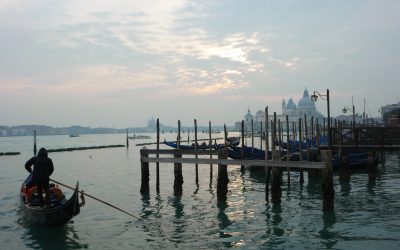An introduction
Background
Since the late 1960s the once ridiculed continental drift hypothesis of Alfred Wegener has been embraced by the geo scientific community at large. Under the guise of plate tectonics (PT) the long held view of stationary continents was replaced by an ever more mobile surface layer – a trendy contraption that has guided geological thinking ever since. Initially, there was a great need to put the PT model to test, but due to the ‘pressure to conform’ such endeavours never became true trials of the popular hypothesis. The frequent discrepancy between PT expectations and factual observations has led to a string of ad hoc repairs of the model, the contortion of many data, with a generous helping of idiosyncratic complexity.
Despite the range of falsified predictions and the continuing unresolved issues, critical evaluation of the model unfortunately and regrettably ended decades ago. Geophysicists continue to pretend that everything is fine, regardless of the fact that current views of global tectonics are deeply mired in conjecture. The Earth sciences now show all the characteristics of being in a state of theoretical crisis.
The paradigmatic problems are not only confined to the brittle surface layer – the lithosphere. In view of modern seismological tomography studies, the inferred structure and composition of the planet’s interior are difficult to reconcile with the idea of mantle convection – the mechanism driving alleged PT processes. Furthermore, the traditional image of an early-stage molten planet – having subsequently undergone chemical differentiation, resulting in an internal layering arranged according to density, has become questionable. The classical view that iron and nickel, at some early stage, settled in a central core while lighter constituents moved upward to form the silicate mantle and crust is still in vogue, and yet confusion and disagreement about the physical and chemical conditions of the deep Earth prevail. Aspects of particular concern may be listed as follows:
a) The Earth’s core seems both inhomogeneous and anisotropic;
b) The core has a somewhat lower density than is presumed; this density anomaly has been explained by the presence of lighter substances such as hydrogen, silicon, carbon, helium, sulphur etc;
c) The core-mantle (C-M) transition zone is undoubtedly a very complex region suggesting that the core is not in thermo-chemical equilibrium with the mantle;
d) The lower mantle is apparently very inhomogeneous, potentially storing considerable volumes of interstitial water;
e) The continental mantle differs in constitution from the oceanic mantle, leading to the concept of: f) Deep continental roots – perhaps extending even to the core-mantle boundary.
In fact, it looks as if the Earth is in a state of chemical disequilibrium. Degassing of the core and lower mantle is apparently incomplete, probably implying that the temperature of the deeper parts of the planet has always been moderate – higher temperature and magma pockets being properties only of the outer few hundred kilometres. When extended to the surface, upstanding segments of the C-M boundary tend to correspond to deep oceanic depressions, while ‘topographically’ lower C-M regions accord with the location of the continents and their mantle roots. In other words, it seems a distinct possibility that chemical agents, released by processes in regions of the C-M transition zone (or deeper), continue to behave as reactive substances rising across the mantle – causing mineralogical changes en route. This irregularly distributed vertical mass flow could be expected to have produced significant chemical and structural transformations of an outer brittle carapace – including building up the underlying inhomogeneous fluid and gas infected asthenosphere.
Deep continental drilling in recent decades, in Kola and at Windischeschenbach in South Germany, has uncovered facts about the physical state of the crust that are in marked contradiction to ingrained opinion. Against all odds, in the presumed dry granitic rocks of S. Germany salty water was found in abundance. Thus, Science (v.261, 1993: 296) reported that “after the drill had penetrated more than 3 kilometres of dry rock, it broke into water aplenty. Core samples retrieved from 3.4 kilometres were veined with open cracks more than a centimetre wide that had presumably carried fluids. That was only a hint of what was to come at 4 kilometres, where more than half a million litres of a gas-rich, calcium-sodium-chloride brine twice as concentrated as seawater poured into the well. Abundant fluids gushed from depths as great as 6 kilometres”.
Indeed, the observed exponential opening up of cracks with depth in the crust – as revealed by the Kola and S. Germany deep crustal drilling – along with the abundance of hydrous fluids, signifies that relatively high hydrostatic pressures exist even at few kilometres depth. This fact actually throws much conventional thinking of the Earth into total disorder. A new theoretical platform is obviously needed.
An Alternative Evolutionary History
- At an early stage, the Earth was blanketed by a thick pan-global crust of dioritic-anorthositic composition, similar to that of the lunar crust;
- Due to internal reorganization of mass, the primitive crust gradually became more granitic and the surface was covered by shallow epicontinental seas – the water being expelled from the deep interior;
- The increasing hydrostatic pressure has led, particularly since late Palaeozoic time, to profound mineralogical and structural changes of the crust; i.e.
- Processes of sub-crustal delamination have led to progressive crustal thinning, basin formation and basification of the attenuated crust;
- Eventually, in late Miocene time, the strongly buoyant effect of accumulated supercritical fluids, led to the uplift of mountain ranges along deep crust-cutting fault zones;
- The present continents and deep oceanic basins are the provisional end products of prolonged degassing-triggered crustal transformation processes – having been particularly active since the latest Palaeozoic;
- Vertical mass transfer has affected planetary rotation – giving rise to episodic changes of spin rate and of spatial reorientations of the Earth (the phenomenon of Polar Wander);
- These rotational ‘jerks’ are the triggers of tectonics and related processes, and explain why Earth history can be subdivided into periods separated by distinct boundaries;
- The evidence favours stationary continents – i.e. the continental lithosphere has stayed with its mantle roots;
- Thus, the crustal mobility, demanded by palaeomagnetic and space geodetic measurements, is primarily an Alpine phenomenon – limited to in situ azimuthal changes of the continental blocks;
- At times of changes in rotation, the entire lithosphere has been subjected to variable wrench deformation (torsion) – hence the term GLOBAL WRENCH TECTONICS;
- At some future stage of the Earth’s evolution, the ongoing transformation processes will have erased the crust altogether; the planet will then be covered by the ultra basic upper mantle topped by a pan-global deep ocean.
- Some specific facets of the new theory, with particular emphasis on the Alpine geological history, are outlined below.
Formation of deep ocean basins – the South Atlantic
According to this new global geological view, the oceanic crust is a thinned and chemically transformed product of an originally thick continental crust. The build-up of sufficiently high hydrostatic pressures in the topmost mantle, to accelerate crustal transformation processes – ‘ozeeanization’, was apparently not in place prior to the Mesozoic. Animation 1 portrays a mid-Mesozoic event of crustal subsidence in the South Atlantic region.
A summary of the development pattern may be listed as follows: Sub-crustal thinning is generated partly through eclogitization and associated gravity-driven delamination – the pressure required for eclogite production being through the build-up of hydrostatic pressure (not by overburden pressure), and partly through rock decomposition by the strongly corrosive effect of supercritical water;
- Subsidence of the attenuated crustal belt is bounded by prominent components of a ‘N-S’ striking set of pan-global steeply-dipping conjugate fractures, producing near-parallel margins of adjacent continents;
- Subsidence has produced extension within the upper crustal layering, including listric faulting along the capped sedimentary sequences;
- During most of the Mesozoic, uneven ‘oceanization’ left a number of between-continent transverse crustal fragments relatively intact, serving as biological migration corridors until they finally broke up in the latest Cretaceous;
- The closed-in situation of the embryonic oceanic depressions gave rise to anoxic conditions and deposition of black bituminous sediments;
- The more concentrated fluid flow along the deep margin faults led to increased crustal thinning in these crustal tracts, giving rise to the frequently observed thick sedimentary wedges along present-day continental margins;
- The deep margin fault zones also paved the way for magma that formed flood basalt provinces along the developing margins, such as the Kaoko Lavas of SW. Africa and the Serra Geral Basalts of coastal S. America;
- Degassing along the margin fracture zones – including water vapour, carbon-dioxide, methane and hydrogen sulphide – is the direct cause of the concentration of mud volcanoes and gas hydrates in such offshore settings;
- Degassing also affected other parts of the evolving ocean basin – producing both pillow lava and asphalt volcanism, besides precipitates of multi-metal concretions (manganese nodules);
- The oceanic basins have evolved in stages – each ‘oceanization’ event displaying an initial uplift, in response to build-up of upper mantle hydrostatic pressures, and then a more rapid ‘down-drop’ of the sea floor consequent upon upper mantle gas pressure release;
- The vertical oscillations of the evolving deep sea basins are in phase with ‘first-order’ eustatic sea level variations.
Eustatic sea-level curve and principal geological boundaries
In addition to displaying the principal geological boundaries, along with presumed intensified gas exhalations to ocean and atmosphere, Animation 2 depicts the generalized sea-level variation for post-Precambrian times.
The new theory provides the following phenomenological relationships:
- The embryonic stage of deep sea basins apparently began in the Cambrian: the build-up of excessive upper mantle volatile pressures and associated regional topographic uplifts – the prerequisites of sub-crustal thinning – caused extensive flooding (transgression) of land areas less affected by the thinning process;
- The prolonged Palaeozoic transgression terminated in a prominent event of upper mantle gas release and related crustal subsidence – causing the deep regression at the Permian-Triassic boundary;
- In the Mesozoic the evolving deep sea basins were once again subjected to prolonged uplift – giving rise to another transgressive super cycle reaching its maximum in the late Cretaceous (Cenomanian);
- During subsequent events of regression – notably the one marking the Cretaceous-Tertiary boundary – the oceanic basins gradually increased their volume capacity. Thus, despite progressive expulsion and surface accumulation of juvenile water the continents are dryer now than ever before in their post-Precambrian history;
- Events of widespread basin subsidence and crustal loss to the mantle have triggered planetary acceleration – initiating global tectonic activity, widespread volcanism, and upward surging of climatic and toxic gases that time and time again led to extreme environmental consequences and biological catastrophes. Such chains of interrelated phenomena are the principal signatures of geological time boundaries.
Note: The characteristics of sea-level variation suggest that the events of Upper Mantle gas release and related stages of deep sea subsidence – the principal causes of accelerated geological and environmental processes, defining geological boundaries – are much more distinct than the build-up of the same gas pressures.
Mobile continents – essentially an Alpine affair
By the late Mesozoic, the present configuration of continents and deep sea basins was approaching its present state, the Moho interface was largely in place, and the upper mantle system of volatile- and magma-retaining wedges – the asthenosphere – had reached more ‘mature’ stages. Hence, the outer brittle layer – the lithosphere – had become more easily detachable from the underlying soft asthenosphere – signaling a new tectonic situation for the Earth.
Concurrently with oceanic deepening, a substantial amount of the crust had been lost to the mantle (cf. Animation1). Thus, the inferred overall dynamical effect of this crustal ‘oceanization’ would be a net planetary spin acceleration- as also suggested by fossil ‘clock’ data for the Cretaceous (Creer 1975).
The late Cretaceous acceleration of the Earth’s rotation produced a latitude-dependant westward inertia drag on the lithosphere. This led to clockwise wrenching (torsion) of the northern palaeo-hemisphere and a corresponding counter-clockwise wrenching of the southern palaeo-hemisphere – a tectonic system originally revealed by palaeomagnetic data (Storetvedt 1990). Within the inferred wrench system, the inertial response would be more substantial for upstanding continental blocks than for low-lying oceanic regions – leading to individual continental rotations ‘in situ’, depending on their size, palaeo-latitudinal setting and other factors. This global lithospheric wrenching does not detract from the view that the continents have always stayed with their mantle roots (the present-day continental blocks and their underlying mantle roots are products of irregularly distributed deep Earth degassing).
Resulting from the torsion of the global lithosphere, the thinner oceanic sectors were subjected more readily to internal deformation than the mechanically stronger continental regions – reactivating the two ubiquitous orthogonal fracture sets. Depending on a variety of factors, the tectonic response has varied from mega-scale transcurrent faulting (the presently misconceived ‘transform’ faults) to more intense shearing – the latter having produced fault-controlled magneto-mineralogical changes and associated magnetic susceptibility contrasts: the source of the linear marine magnetic anomalies.
All Alpine age continental tectonic structures were formed in response to this time-related inertia-driven wrenching of the global lithosphere; so also was the mega scale shear belt of the Central Indian Ocean – bounded by the Laccadive Chagos and Ninety-East Ridges, during which the India block (situated at the northern end of this fold belt) underwent a significant clockwise rotation in situ.
Atlantic bordering land masses in motion
The main tectonic facets of the Atlantic region, illustrated in Animation 3, can be summarized as follows:
- Prior to the Alpine-age dynamical events, the evolving margins of the Atlantic basin were closely parallel – being oriented along the ‘N-S’ set of ‘vertical’ old fundamental fractures. Some crustal segments across the evolving oceanic basin were still relatively intact, forming between-continent biological migration routes;
- The late Mesozoic acceleration in the Earth’s rotation, which was the trigger for the Alpine tectonic revolution, caused variable in situ motions of the continental blocks.
- North of the time-equivalent equator, running along the southern rim of the present Mediterranean and continuing across the Central Atlantic to the southern Caribbean, the lithospherical shell was subjected to clockwise inertia-driven torsion, involving relative westward swings of the northern continents;
- North America underwent a larger westward rotation (in situ) than the much larger (and therefore dynamically more stable) Eurasian land mass. As this motion had little tectono-topographic effect in the northern North Atlantic, the land connection from Western Europe via Iceland to Greenland remained relatively unimpeded;
- But in the Central Atlantic (nearer to the time-equivalent equator) transtensive conditions were more strongly at play – producing the present southward fanning out of the North Atlantic, as well as opening up pathways for high-pressure mantle volatiles which resulted in the major Chicxulub blow-out crater (off Yucatan Peninsula);
- South of the time-equivalent Alpine equator, the lithosphere was subjected to a counter-clockwise torsion. Thus, resulting from the classical Coriolis force Africa and Eurasia rotated in opposite senses – of the order of 25º each – the intervening Alpine-Himalaya tract was turned into an overall transpressive (compression plus shear) tectonic belt;
- Owing to the relatively narrow Equatorial Atlantic, the rotation of Africa led to considerable tectonic straining on northern South America (SA). The counter-clockwise inertia effect on SA was opposed by a strong transpressive force on its northern margin (due to the counter-clockwise rotation of Africa) leading to a net clockwise rotation of SA. In consequence, the South Atlantic attained a southward fanning-out shape;
- As a consequence of the torsional forces exerted on the opposing lithospheric masses, the south Atlantic trans-oceanic land connections broke up. Due to deepening of the oceanic basins, the extensive late Cretaceous epicontinental seas largely disappeared;
- Events of Alpine-age tectonic straining across the Equatorial Atlantic have repeatedly led to considerable crustal deformation and up-and-down motions in this relatively narrow oceanic transect – giving rise to the appearance and disappearance of oceanic islands;
- The Alpine rotations of the Americas united the two land masses. The net clockwise rotation of the South American block led to considerable shearing on its northern borders (expressed by an extensive left-lateral translation along the trans-Guatemala Fault Zone), ending in a shallow, inclined transpressive front along the Lesser Antilles Arc;
- The smaller continent of Antarctica underwent significant rotation producing another transpressive tectonic front – the Scotia Arc;
- During the Alpine climax, wrench deformation of the mechanically weak oceanic lithosphere led to the southward extension of the North Atlantic domain – during which the ‘E-W’ set of fundamental orthogonal fractures (implanted in early Precambrian time) were extended into mega-scale transcurrent fault zones;
- As a product of the same inertia forces, the ‘N-S’ set of these old fracture systems was subjected to intense shearing, producing fault-aligned belts of variable mineral alteration and associated magnetic susceptibility. The resulting two-dimensional pattern of susceptibility contrasts is regarded as the underlying cause of the linear marine magnetic anomalies – in terms of variable induction by the ambient geomagnetic field. The Vine-Matthews interpretation of these anomalies, in terms of geomagnetic field reversal and seafloor spreading, does not apply;
- Relative continental rotations led to a significant tectonic break-up in the ‘mid’-ocean position, along which later topographic uplift – in the Miocene, concurrent with the rising of continental mountain chains – formed the Mid-Atlantic Ridge.




